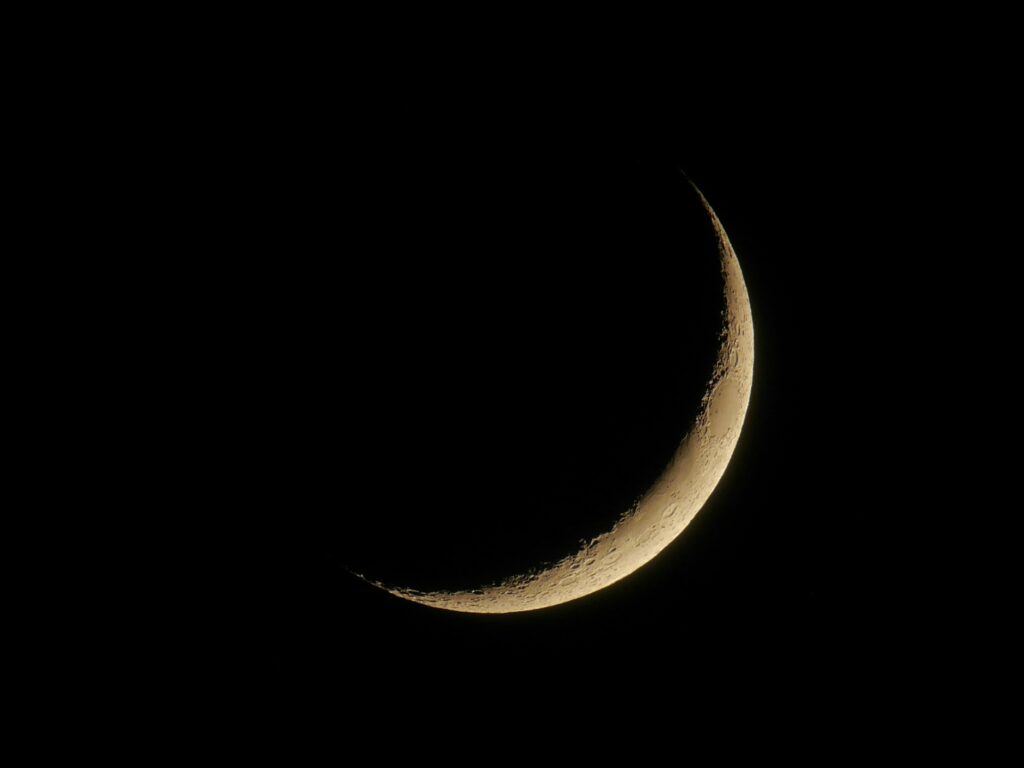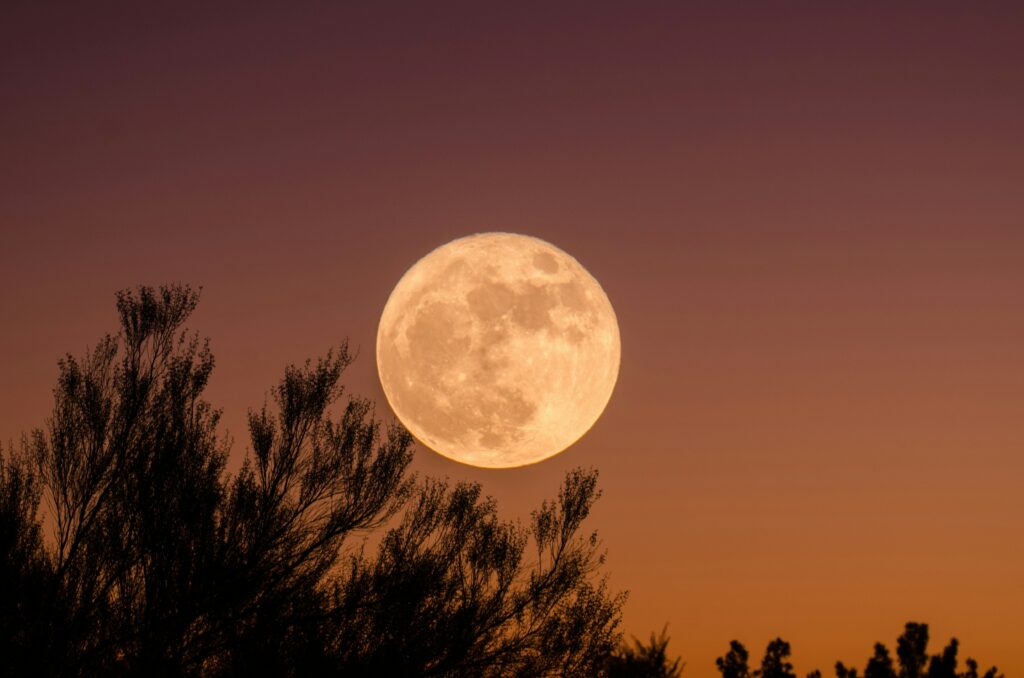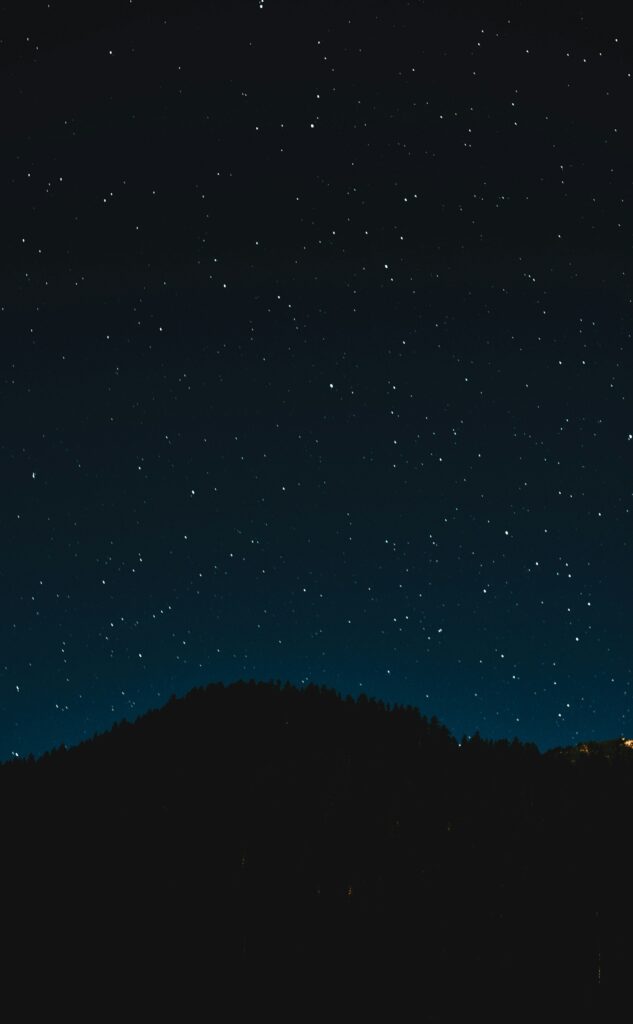Moon Cycles and Menstrual Cycles… are they connected?
If your experience of “sex ed” or “health class” managed to leave a hell of a lot out of the conversation when it came to understanding the female body, you are definitely not alone. And any mention of there being a connection between moon cycles and menstrual cycles…? Not a chance.
The general consensus with fellow millennial and Gen Z women is that we were sent out into the real world, barely equipped with knowing what our bodies were doing each month, and definitely didn’t get any information that would encourage us actually to see our monthly cycle as something empowering.
Most of us have had the common experience of feeling woefully disappointed by our biology education, but there’s another surprisingly related commonality we seem to share…
Based on the oodles of conversations I’ve had over on Instagram and while hosting workshops, many of us also grew up, or have grown into, feeling a deep fascination with the Moon.
Maybe you’ve already dove deep into the realms of how our menstrual cycles are connected to the Moon cycles, but if not, let’s explore this maybe-not-so-mystical connection between our bodies and the rhythms of this luminary satellite — Mama Moon.
What does the Moon have to do with our Menstrual Cycles?
While historically, most scientists would argue that drawing connections between the Moon’s phases and our menstrual cycle is unfounded or “woo woo,” we are starting to see more studies emerge confirming what many women have intuitively known all along — just like the oceanic tides, our bodies are influenced by the same waxing and waning energy as the Moon and it certainly doesn’t feel “woo woo” to notice the patterns that arise each month as we observe our inner shifts and the similarities to the lunar phases.

But even if science never definitively “proves” the influence of the Moon on our menstrual cycles, we can look at the lunar phases as (yet another) reminder from Mother Nature that our cyclical bodies are so wise in their ebbs and flows.
And THIS is what matters more than the patriarchal validation of a double-blind-placebo study: finding reassurance in the similarities of our bodies to nature’s innate and inherently wise, cyclical rhythms.
When we look to natural rhythms like the moon cycles, or the Earth’s seasons, we see that it goes against nature to expect same-ness, day-in and day-out. So why would we demand our bodies to be any different?
Let’s take a look at how the lunar phases can support the connection to your fertility cycle while also providing a reminder that your body is so wise in its innate rhythms.
How the Moon Cycles Match our Menstrual Cycles
The Moon is constantly shifting throughout its 29.5 day cycle, making each nightly appearance different than the one before. Sound familiar? It’s just like our bodies have slightly different hormonal expressions throughout the monthly fertility cycle, and also mirroring the incremental seasonal shifts we see each day during the Wheel of the Year.
So, while we could say that the Moon has 29.5 different phases, let’s simplify things like we do with the seasons: four over-arching phases that define the lunar cycle.
The Waxing Moon: A Mirror of Spring time and the Follicular Phase

The time after the darkest days of the Moon’s cycle (when she is not visible in the sky), leading up to the days just before the Full Moon is the Moon’s Waxing phase. Visually, we see the crescent growing bigger in the sky, filling in a bit more each night.
Like emerging from the cold and darkness of spring after winter, this lunar phase is about growth, curiosity, and expansion.
These same energies are present during the follicular phase of the menstrual cycle.
The Full Moon: A Mirror of Summer time and the Ovulatory Phase

The Full Moon may only be truly “full” on one day during the cycle (just like we only ovulate on one day during the fertility cycle) but the heightened energy of the Full Moon can be felt for multiple days around that peak.
The brightness of the Full Moon corresponds to the peak in the Wheel of the Year during summer time. This phase is all about being seen, embracing vibrant energy, and connecting to community.
These same energies are present during the days around ovulation.

The Waning Moon: A Mirror of Autumn time and the Luteal Phase
The Waning Moon occurs in the days before the Moon “disappears” from the sky. The visual appearance of the Moon in the sky is that she is “decreasing” in size — slowly reflecting less and less light back to us.
This diminishing phase is connected to the slowing-down of autumn time. This is a time of taking stock of what resources we have on hand, cultivating a sense of discernment, and readying for the phase of rest during the Dark Moon.

The Dark Moon: A Mirror of Winter time and the Bleeding Phase
Ancestrally, the time of the Dark Moon was often feared, as the disappearance of the Moon meant there was no light to guide our primitive ancestors at night.
The Dark Moon invites us to go inwards and cultivate a time of rest, just like the Earth does each winter season. This phase is all about that slow-down energy, a time of reflection and contemplation before the cycle begins anew once again.
These are the same energies we are invite to embrace during the monthly bleed time.
Cycle Tracking: a Map to Living in Sync with the Lunar Rhythms
If you’re already plugging your period dates into an app, you’re on your way towards tapping into the wisdom of your own inner phases and cultivating a deeper connection to dear Mama Moon.
But there’s way more you can uncover through a deeper cycle tracking practice than just letting your app’s algorithm predict your next bleed time. 👇
Learn how to up-level your cycle tracking practice beyond the algorithms
Enter your info below to get a FREE Cycle Tracking Kickstarter Guide

Ready to take your cycle tracking to the next level and unlock the language of your cyclical body? Check out the Inner Seasons, Inner Wisdom guidebook for a deeper learning experience, expanded insights on your four phases, and the wisdom of each Inner Season.
Connecting with the Moon when You don’t have a Menstrual Cycle
Just because you don’t experience a menstrual cycle, doesn’t mean you are no longer connected with the rhythms of the Moon. In fact, when I speak to peri- and post-menopausal women, the first thing I recommend to them is to cultivate a cycle-tracking practice based on the Moon’s cycle.
So, instead of tracking the days of the fertility cycle, track based on the ~29.5 days of the Moon’s cycle. This can provide a comforting rhythm to the body and psyche. During peri and post-menopause, it can be jarring to feel adrift without the monthly pattern of menstruation. Tracking based on the Moon’s phases can be a welcome anchor to root back into your relationship with your body and the natural world.
→ Learn more about this and the Inner Seasons you still experience in the Inner Seasons, Inner Wisdom Guidebook
Comfort in the Consistent Inconsistencies
So while our junior high health class may have failed us miserably in the past, I hope you can take some comfort in knowing how NOT alone you are in your intuition that there was always so much more to the story.
My hope is that the more we connect the seemingly “problematic” rhythms of our bodies to the inherent intelligence of nature, we can see how wise our phases, our Inner Seasons, truly are.
Each night when you look up at the Moon, let her “consistent inconsistencies” affirm for you that there is no one “better” phase than another. Same goes for the ebbs and flows of your monthly fertility cycle.
👉 What do you think — will health classes ever include a talk about menstrual cycles and moon cycle? Drop a note below and tell me about your experience with junior high sex ed — I’m guessing our stories are pretty similar!
Big Love,

